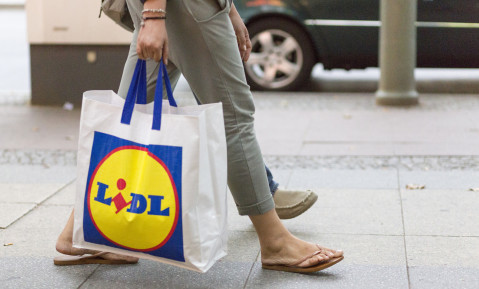Lidl‘s slow store opening programme has caused its share of the lucrative UK discounters market to slip 4.7% points 2010 and 2015, despite its success in food and grocery.
Discounter rivals have prioritised investment in rapid store opening plans, broadening their brand presence and stealing their share of consumer spend.
Of the UK‘s nine largest discounters, second-placed Lidl has opened the fewest stores between 2010 and 2015, estimated at 69 versus 195 at Aldi and 220 B&M Stores, causing it to fall behind its rivals in terms of sales growth and leading to the 4.7% share loss in the five-year period – compared to a 0.4 percentage point share climb in the UK food and grocery market. However, following five years of market share decline, retail consultancy Verdict forecast a turnaround, with Lidl‘s share of the UK discounters market set to rise 0.3% to 18.9% in 2015, driven by resurgence in store openings in 2014 and 2015 and enhanced ranges.
While store closures pick up pace at the grocers and much of the midmarket continues to become more conservative when identifying new store openings, untapped space opportunities remain for the discounters, and those retailers that get there first and deliver like-for-like growth will be the market share winners.
“Discounter store openings must become more strategic in order to fend off competitors, take advantage of gaps in the market and target underserved shoppers,” says Verdict retail analyst Honor Westnedge. “Discounters that target the south of the UK and out of town developments will satisfy increasing consumer demand and meet the growing need for convenience.”
The largest market share winners in the five years to 2015 are Aldi and B&M Bargains, up 15.5 and 4.3%, respectively, with store openings, a tiered price architecture and value for money credentials drawing in new footfall and driving up average basket size. While Lidl can compete on the latter two, the low accessibility of its stores has hindered its performance. “80.7% of consumers in the UK stated that they would not be prepared to travel far to get to a discounter, while 25.5% of consumers who have not shopped at a discounter said that it was because there were no discounters located conveniently for where they lived or worked, highlighting how important store openings are to improve accessibility and reach new shoppers” explains Westnedge.
With this need for convenience and reluctance to travel far to obtain discounted goods, it is important that the discounters continue to target areas where they have a limited brand presence and where demand outstrips existing supply to prevent share loss fuelled by more proactive discounters.


















